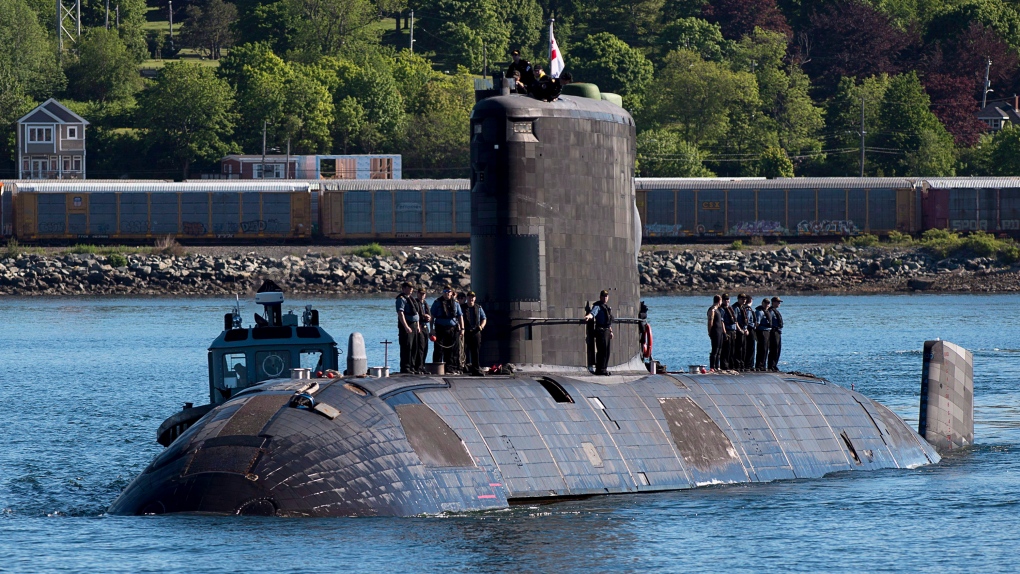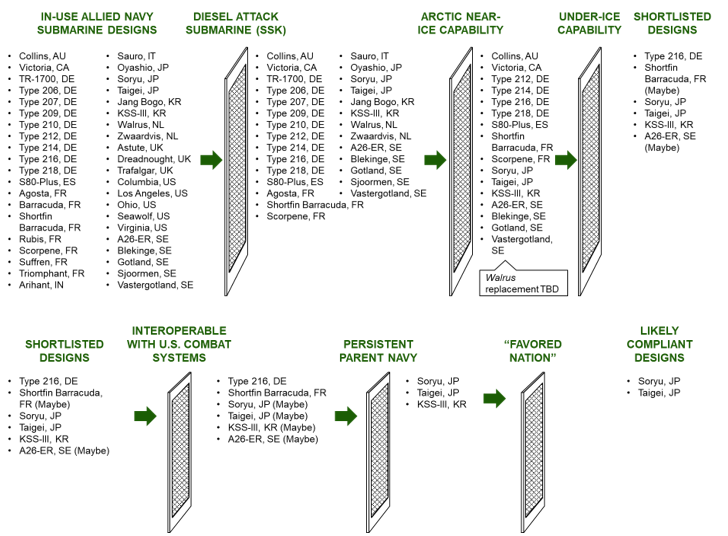- Reaction score
- 5,856
- Points
- 1,260
South Koreans on student visas.I wonder who is going to work on them, Ukrainians? The ship yards we currently have is having difficulties getting skilled workers.

South Koreans on student visas.I wonder who is going to work on them, Ukrainians? The ship yards we currently have is having difficulties getting skilled workers.
The Koreans seem to be much more optimistic than most members of this forum.Specifically, Hanwha Ocean has the biggest interest in the Canadian project among submarine projects around the world. The Canadian Navy plans to introduce 12 3,000-ton-class submarines. The project budget is 60 trillion won (including maintenance cost), the largest in recent years. The price per submarine, including the maintenance service, is more than 2 trillion won. The contractor is expected to be selected as early as 2026
출처 : Businesskorea(Businesskorea)
That is the business development (BD) guys speaking. They say things like this to convince their bosses that they need spend huge piles of money for business development activities. Standard practice in industry.From the article:
The Koreans seem to be much more optimistic than most members of this forum.
Remember our preference is to keep the water out of the people tank.I'm not sure if being able to swim when submerged at crush depth is helpful....
Cellula Robotics Initiates Sea Trials of its Solus-XR System
Cellula Robotics has commenced sea trials of the Solus-XR system, showcasing the company's dedication to advancing Extra Large Unmanned Underwater Vehicles (XLUUVs). The Solus-XR XLUUV has officially embarked on its highly anticipated sea trials, signifying a crucial stride in the company's development of its long range hydrogen fuel cell powered autonomous underwater systems.
"This momentous achievement is a testament to Cellula's enduring commitment to innovation and excellence." Said Adrian Woodroffe, Director of Business Development at Cellula. "Through strategic partnerships and tireless dedication, the company has transformed a vision into reality with the development of the Solus-XR XLUUV, a cutting-edge testament to the future of maritime security."
Building upon the foundation of Cellula's preceding innovation, Solus-LR, the remarkable Solus-XR XLUUV has been meticulously crafted to attain unparalleled operational ranges, reaching an impressive 5,000 kilometers. Through its port-to-port mission capability, Solus-XR removes the necessity for auxiliary support vessels, thus facilitating access to challenging and remote locations frequently encountered in Arctic sub-ice missions. Beyond the elimination of environmentally taxing high-emission support vessels, the cutting-edge hydrogen fuel cell technology developed by Cellula empowers the system to engage in sustainable operations, ensuring minimal ecological footprint.
READ: TECHNOLOGY PROFILE – CELLULA ROBOTICS’ SUBSEA INNOVATION
The initial sea trials are designed to evaluate surface performance and autonomy, offering a valuable opportunity to assess the vehicle's capabilities in the dynamic context of real-world maritime conditions.
Looking ahead, Cellula Robotics Ltd has planned demonstration missions for 2024, a pivotal step in showcasing the full spectrum of the Solus-XR XLUUV's capabilities in real-world scenarios. These missions will underscore the vehicle's potential to redefine underwater security and operations, solidifying its place as a game-changing technology.
Further bolstering its achievements, the Solus-XR XLUUV proudly claims the title of the largest UUV ever developed in Canada. This accomplishment underscores the nation's capacity to drive innovation and lead in the development of cutting-edge underwater technology.
As Cellula Robotics Ltd pushes the boundaries of innovation, the sea trials of the Solus-XR XLUUV mark a defining moment in the company's journey, demonstrating its commitment to excellence and setting the stage for a new era of XLUUVs.
I have no doubt that UUVs like this will need to be part of the RCN's personnel challenged future.Another piece of the puzzle?
Solus-XR — Cellula Robotics
www.cellula.com
Solus-XR
Cellula Robotics
https://www.cellula.com › solus-xr
Length: 12 m ;
Cross-section: 1.7 x 1.7 m ;
Displacement: 25500 kg ;
Range: 5000 km over 45 days ;
Sprint Speed: 8 kts.
Transport in a standard ISO 40' container ...
Three on the deck of a Harry de Wolf.
Indian arm has long been the testing ground for these systems. I remember having to dodge submersibles and semi-submersibles there back in the 90's while we conducted our own trials in advance of a autonomous AUV back in the 1990s.Another piece of the puzzle?
Solus-XR — Cellula Robotics
www.cellula.com
Solus-XR
Cellula Robotics
https://www.cellula.com › solus-xr
Length: 12 m ;
Cross-section: 1.7 x 1.7 m ;
Displacement: 25500 kg ;
Range: 5000 km over 45 days ;
Sprint Speed: 8 kts.
Transport in a standard ISO 40' container ...
Three on the deck of a Harry de Wolf.
Error Edit: The AOPVs only carry 20' containers. Never mind.
I don’t see it. AUS is out there on their own as a self-defending semi-hegemonic state. Canada is an arrogant lamprey that thrives on moral usury and cheapness to live under a rather extensive and benevolent bubble of security.After seeing and listening to this I started wondering if the AUS politician's reasoning for nuclear submarines can be used as a case for Canada to obtain SSNs?
AIP subs are in the new defence policy I'm sure of it. We'll see if it survives to be released this fall, and if the new government (whatever that is going to look like) wants to keep it going.Perhaps the future PM. Mr. Poilievre, according to the latest polls, might support the procurement of AIP submarines, although I admit I'm not very hopeful. He does talk a good talk about supporting DND/CAF, but talking is not the same as actually doing something about it.
:quality(70)/cloudfront-us-east-1.images.arcpublishing.com/archetype/W6KH7YF3TVCHXO3G4XATQLNR4Y.jpg)


Interesting perspective, from an American think tank. I like the use of a filter, though I'm a bit confused by the "Favored Nation" filter eliminating the Koreans. Not sure if that term used here refers to a security or a commercial arrangement, but if it's commercial, Canada does have a free trade agreement with Korea, so perhaps it does not apply?Recent news regarding the defence cuts notwithstanding, I will continue to move forward with the thought that the Canadian Patrol Submarine Project will continue because of the potential boost to the Canadian Defence Industry and jobs. Not with the actual building of the submarine, but the components that would into the vessel, and the future upgrades and modernization that would occur after it has been in service.
Excellent article with regards to the Canadian Patrol Submarine Project. I'm not an expert about submarine operations and technology but the final choices that came through the filters did surprise me.
Existing Submarine Designs That Could Meet Canada’s Needs
As the Canadian Patrol Submarine Project considers how to best replace the Victoria-class and deliver the military capabilities that Canada could need in this period of great-power conflict, it might find it useful to understand how well existing platforms deliver those capabilities. Canada’s path to replacing the Victoria class could be easier – both in cost and schedule – if existing designs are able to deliver Canada’s preferred capabilities.
While Canada has not formally announced its requirements for the Canadian Patrol Submarine Project, public comments indicate that Canada’s requirements may include:
Using publicly available information, we assessed 41 allied navy submarine designs against these potential requirements (Figure 1), identifying 3 submarine designs that could meet Canada’s potential requirements: Japan’s Soryu and Taigei classes, and South Korea’s KSS-III class.
- Diesel attack submarine (SSK)
- Operating range of 6,000 nm
- Under-ice capability
- Interoperable with the U.S.’s Virginia-class combat system (leveraging Canada’s prior investment in this system)
- An established, persistent parent navy (to reduce Canada’s in-service support burden)
If valid, this assessment has potential implications for Canada’s approach:
- Canada’s potential requirements may not be commonly found together, implying that Canada might need to be flexible on requirements (e.g., under-ice capability, persistent parent navy), willing to engage in a limited-competition procurement (e.g., 1 or 2 bidders), or able to shoulder the design-build cost of a new, bespoke design
- The combination of SSK and under-ice capable is relatively rare – many nuclear submarines can operate under-ice, but not many diesel attack submarines can
- Several potentially attractive designs have not been built (e.g., Shortfin Barracuda, Type 216, A26-ER), and Canada would likely incur additional costs due to first-of-class cost growth and the in-service support burdens that fall to a parent navy
- If only 3 operating submarine designs meet Canada’s potential requirements, there may not be an opportunity to buy a “used” submarine (like Canada did with the Upholder / Victoria), potentially forcing Canada into a more expensive acquisition of new submarines

Figure 1. Comparison of 41 allied submarine designs with Canada’s potential requirements.
Conclusion
It is possible that the requirements that best meet Canada’s needs are a rare combination: few navies need to cover Canada’s extent of Arctic territory, and those that do (e.g., Russia, U.S.) choose to do so with nuclear, not diesel, submarines. Understanding the implication of requirements on available designs could help the Canadian Patrol Submarine Project optimize Canada’s capability needs, schedule requirements, and available budget. Conversely, setting requirements before understanding which existing designs are feasible could put Canada on the same path that Australia recently abandoned: a prohibitively expensive, bespoke, diesel submarine.

